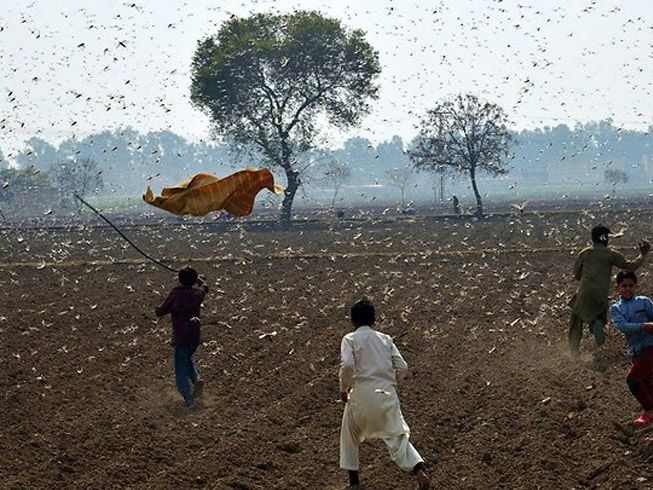The whole of Pakistan is under threat of an intense second-wave invasion of desert locusts if control measures fail to contain the upsurge of insects within the breeding regions in the west of the country, according to the UN’s Food and Agriculture Organization (FAO) report released in April.

Around 38% of Pakistan is now a breeding ground for the desert locusts. The wet winter left ideal breeding conditions in the agricultural belt, and across the border in north-east Iran. Fresh, potentially devastating, migrations of new swarms both from within Pakistan and crossing the border from Iran are expected within weeks.
“This year the situation is aggravated as, for the first time in many decades, there is a second threat of invasion by swarms in East Africa in late June and during July,” stated the FAO report.
The prolonged second wave of breeding represents an “unprecedented threat” to food security and livelihoods as it coincides with the beginning of long rains and the planting season. Recently planted staple crops including wheat, chickpea and oilseed are already under threat of severe damage.
The losses for agricultural production caused by locust plague to just three key crops are estimated to reach around 200 billion Pakistani rupees (£1 billion; $1.2 billion; €1.1 billion), based on about 15% damage levels. For other crops, with 25% damage, losses will be about 400 billon Pakistani rupees (£2 billion; $2.5 billion; €2.3 billion).
With the country also economically disabled by the Covid-19 crisis, poorer Pakistanis, including many Christians, have suffered a disastrous loss of income and are struggling to feed their families. Rural areas with locust infestations, including southern Sindh province, have been particularly badly hit by this double emergency.
From Barnabas Fund contacts and other sources

